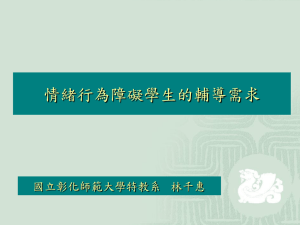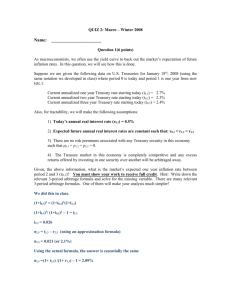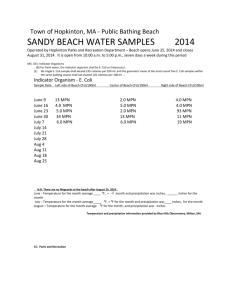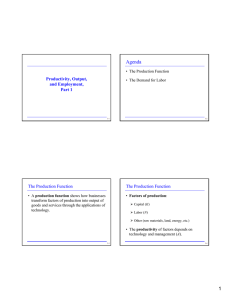L03_LaborMarket - Duke University's Fuqua School of Business
advertisement
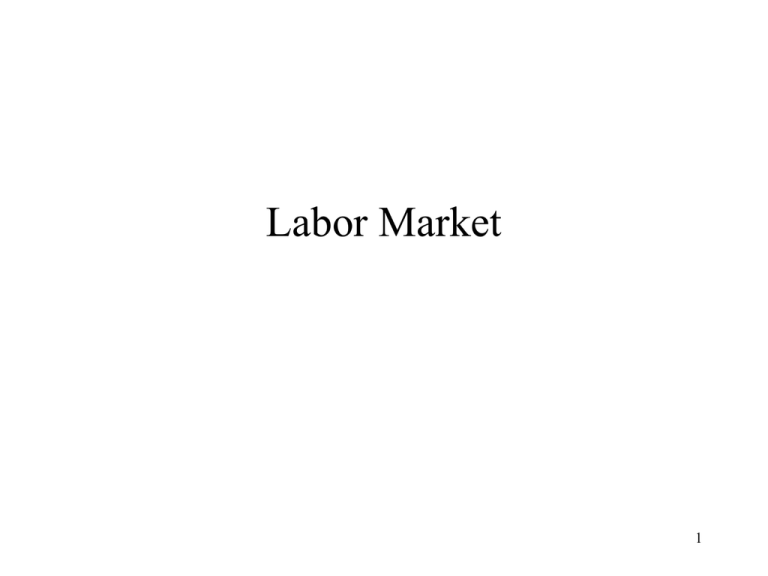
Labor Market 1 Deindustrialization? U.S. Manufacturing Employment Manufacturing Wage Rate, 2005 Millions of Jobs 2 Wages by Education in the U.S. 3 Marginal Product of Labor •Firms employ workers to produce good and services • Marginal Product of Labor is the additional output produced by a worker 4 Diminishing Marginal Productivity • Diminishing marginal productivity of labor MPN k MPN 0.7 A n 0.3 • MPN depends on A and k/n • For given k and A a rise in n leads to a fall in MPN Fix k n 5 The Determination of Short-Run Labor Demand MPN & w MPN1 • w = real wage rate • To maximize profits the firm should – Increase n if MPN > w* – Decrease n if MPN < w* • It follows that the demand for labor function equals the MPN function W* MPN2 MPN n1 n* n2 n w = MPN Condition of profit maximization 6 Factors that Shift the Aggregate Labor Demand Curve w Increase in A or k • An increase in TFP causes the labor demand curve to shift right. • An increase in the capital stock causes the labor demand curve to shift right. n 7 The Supply of Labor w ns • Labor is supplied by households • Aggregate labor supply increases with wages • Higher wealth lowers labor supply at any wage n 8 Short-Run Labor Market Equilibrium (fix k) w • Real wage is determined so that labor demand equals labor supply at point X. Z X MPN* MPN • An increase in TFP shifts the MPN curve to MPN*. • The new equilibrium is at point Z with higher real wage and employment. n 9 Recession Sharp oil price rise • Lowers A • Lowers demand for labor • Lowers real wages and real GDP • This is a recession. w ns MPN MPN* n 10 Oil Price Real Nominal 11 Unemployment 12 Wages across countries and time 13 Does the theory work? • Are real wages proportional to labor productivity over time? • Are real wages proportional to labor productivity across countries? 14 Real Wages and Productivity over time 15 International Wage Differences 16 Productivity and Wages 17 Real Wages and Productivity Across Countries Wages and Productivity (Output per Worker) Across Countries 18 Do real wages converge? 19 Size Distribution of Firms in the US Over half of all employment is in small firms. Source: Brian Headd, “The Characteristics of Small-Business Employees,” Monthly Labor Review, 2000. 20 Job Creation and Destruction in the US 2006Q2: - 7.8 million jobs created - 7.3 million jobs destroyed - .5 million net change in number of jobs Job creation: net employment change of establishments expanding employment Job destruction: net employment change of establishments reducing employment Job creation and destruction is significantly higher than net job creation. 21 Productivity and Resource Reallocation Churning is the key to economic growth. Source: John Haltiwanger, “New Ideas for Measuring Labor Productivity,” Census Brief, 1998. 22 Structural Transformation and Development Source: Bah El-hadj, The University of Auckland, “Structural Transformation in Developed and Developing Countries,” 2008. 23 Real Wages and Hours Worked 24 Labor Market and Wealth ns * w Z • A permanent rise in A raises MPN and thus shifts out the labor demand curve. • A permanent rise in A raises wealth and thus shifts left the labor supply curve. • The new equilibrium is at point Z with higher real wage and possibly lower employment. • Note, though, that hours worked per person may fall, but a rise in wages may lead to a rise in the labor force participation rate (especially for relatively poor countries). ns X MPN* MPN n 25 Income Inequality 26 Rise in Real Wage Dispersion • Two potential explanations – Open trade (greater globalization) – Technological improvements 27 Skill Biased Technical Change w w NS_unskilled ND_unskilled ND’_unskilled N_unskilled NS_skilled ND’_skilled ND_skilled N_skilled •Skill biased technical change increases demand for skilled workers and hence their wages •The opposite is true for unskilled workers. 28 29 Key Message • Wage premium for skills have gone up and relative supply have been catching up • The information technology (IT) revolution is biased toward skilled labor 30 Skill Premia Across Countries • Skill premia are highest for poor countries • Poor countries have a shortage of skilled workers • Why? 31
